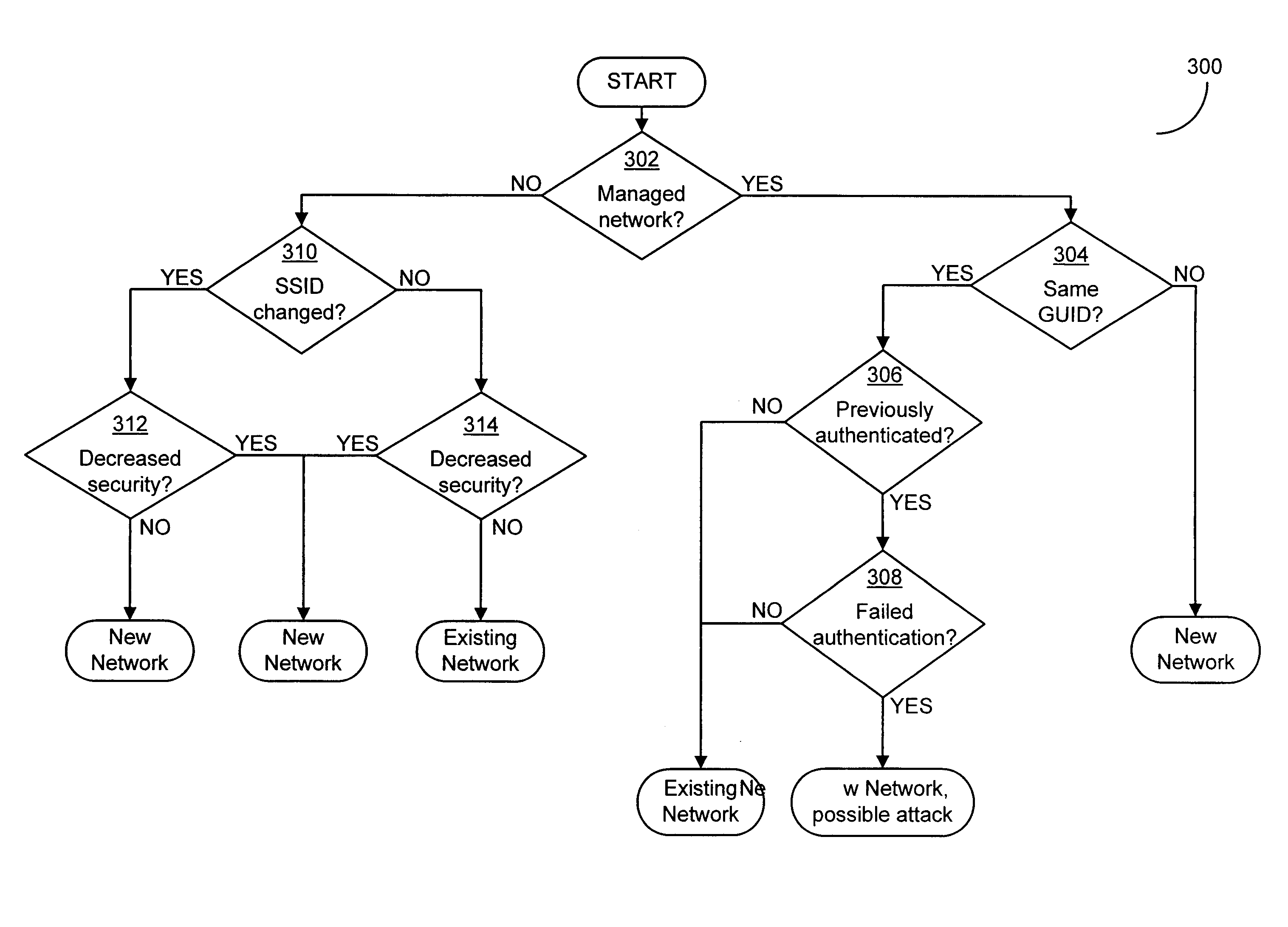History-based downgraded network identification
a network identification and history-based technology, applied in the field of history-based downgraded network identification, can solve the problem that the client device may determine that the network is not authentic, and achieve the effect of reducing the risk of attack and increasing security
- Summary
- Abstract
- Description
- Claims
- Application Information
AI Technical Summary
Benefits of technology
Problems solved by technology
Method used
Image
Examples
Embodiment Construction
[0014]Applicants have appreciated that conventional methods of identifying networks and / or wireless access points suffer from significant risk of networks being spoofed to enable an attack by malicious third parties. A spoofing attack on a computer or computer network is one in which an attacker's device masquerades as a trusted device to gain illegitimate access to the computer or computer network. As an example of such an attack, for a WLAN, while users (e.g., typical users such as end users and / or special users such as administrators) may configure their client devices (e.g., computers) to automatically connect to a WLAN based on a specified SSID, conventional client devices are not capable of verifying that a wireless access point transmitting the specified SSID is the wireless access point to which the user intended to connect. A client device may therefore automatically connect to a wireless access point based on a broadcast SSID without the client device being certain that th...
PUM
 Login to View More
Login to View More Abstract
Description
Claims
Application Information
 Login to View More
Login to View More - R&D
- Intellectual Property
- Life Sciences
- Materials
- Tech Scout
- Unparalleled Data Quality
- Higher Quality Content
- 60% Fewer Hallucinations
Browse by: Latest US Patents, China's latest patents, Technical Efficacy Thesaurus, Application Domain, Technology Topic, Popular Technical Reports.
© 2025 PatSnap. All rights reserved.Legal|Privacy policy|Modern Slavery Act Transparency Statement|Sitemap|About US| Contact US: help@patsnap.com



